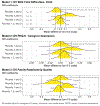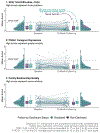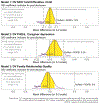Comparing fears about paediatric HIV disclosure to the lived experiences of parents and guardians: a prospective cohort study
- PMID: 35188010
- PMCID: PMC9392813
- DOI: 10.1080/08870446.2022.2041637
Comparing fears about paediatric HIV disclosure to the lived experiences of parents and guardians: a prospective cohort study
Abstract
Objective: We aimed to: (1) follow parents and guardians through the process of paediatric HIV disclosure to understand how often pre-disclosure worries are realised; and (2) estimate the effects of disclosure on child, caregiver, and family well-being.
Design: We conducted a 12-month prospective cohort study in Zimbabwe with 123 primary caregivers of children ages 9 to 15 years who were HIV positive but did not know their serostatus at baseline. By the end of the study period 65 caregivers reported that their child learned his or her HIV-positive status.
Main outcome measures: We used three waves of data to compare caregivers' pre-disclosure worries to post-disclosure reports and to characterise associations between disclosure and well-being of the child (Strengths and Difficulties Questionnaire), caregiver (Patient Health Questionnaire-9), and family (Family Relationship Quality) over time.
Results: Caregivers' pre-disclosure worries and fears about how their child would react to disclosure of their HIV status largely went unrealised. Furthermore, we did not find strong evidence of clinically-important increases in problems on average following disclosure.
Conclusion: Findings support the call to identify supportive intervention strategies that address caregiver fears at the beginning of the disclosure process.
Keywords: Africa; HIV; adolescent; disclosure; mental health; parents.
Conflict of interest statement
Declaration of Interest
The authors have no conflicts of interest to disclose.
Figures





References
-
- Brunette W, Sundt M, Dell N, Chaudhri R, Breit N, & Borriello G (2013). Open Data Kit 2.0: Expanding and refining information services for developing regions.
-
- Bulali RE, Kibusi SM, & Mpondo BC (2018). Factors associated with HIV status disclosure and its effect on treatment adherence and quality of life among children 6–17 years on antiretroviral therapy in southern highlands zone, Tanzania: unmatched case control study. International Journal of Pediatrics, 8058291. - PMC - PubMed
-
- Bürkner P-C (2018). Advanced Bayesian multilevel modeling with the R package brms. The R Journal, 10(1), 395–411. 10.32614/RJ-2018-017 - DOI
Grants and funding
LinkOut - more resources
Full Text Sources
Miscellaneous
